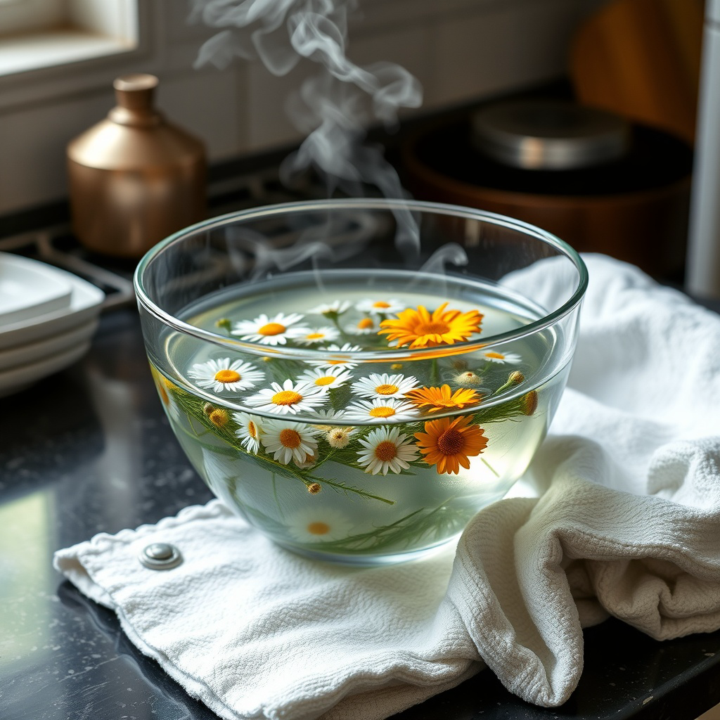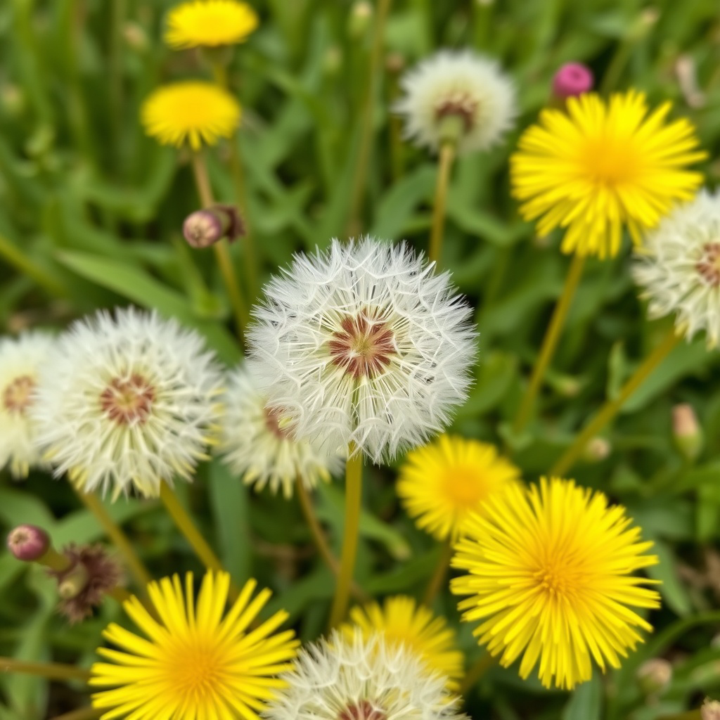Activity
Mon
Wed
Fri
Sun
Nov
Dec
Jan
Feb
Mar
Apr
May
Jun
Jul
Aug
Sep
Oct
What is this?
Less
More
Owned by Jeanne A
Relief for busy, skeptical women: simple, proven aromatherapy & self-care routines—no hype, just results. Discover your new Scent Club.
Memberships
Fit Women 50+ Mindset - Habits
39 members • Free
Skoolers
175.8k members • Free
Aromatic Wisdom Community
22 members • Free
The Archetype Apothecary
14 members • Free
Ruxandra's Resilience Room
5 members • Free
🌀 Soul Growth Circle
15 members • Free
April Joy Wellness
34 members • Free
ACP Companion Journey
452 members • Free
Leads by AI Grimm
211 members • Free
56 contributions to April Joy Wellness
Can your self-love garden use a little tending?
Happy Monday, beautiful souls! Let’s start this fresh week with a gentle check-in—just you, me, and a little heart-to-heart wisdom. Today, I want to talk about something that’s close to my heart (and maybe yours, too): self-love. Like a wildflower that needs sunlight and rain, our well-being blossoms when we nurture it with kindness and care. So, how do you know if your self-love garden could use a little extra tending? Here are three gentle signs to look for—and some simple ways to start today: You’re Your Own Harshest Critic If you find yourself replaying mistakes or talking down to yourself in ways you’d never speak to a friend, you’re not alone. I’ve been there, too—caught in a storm of self-judgment. The first step? Try a morning mirror affirmation. Look yourself in the eyes and say something kind, even if it feels a little awkward at first. Over time, these small seeds of kindness grow into deep-rooted self-acceptance. You Struggle to Set Boundaries Do you often say “yes” when your heart is whispering “no”? Setting boundaries is an act of self-love, not selfishness. Imagine your energy as a beautiful garden—sometimes you need a gentle fence to protect your blooms. Practice saying, “I need some time for myself tonight,” or “I’m not able to take that on right now.” Each time you honor your needs, you’re watering your own roots. Gratitude Feels Out of Reach When we’re running on empty, it’s hard to notice the good around us. If gratitude feels distant, try an evening gratitude practice. Before bed, jot down one thing—big or small—that you appreciate about yourself or your day. Even a single wildflower can brighten a whole field, and so can one moment of gratitude brighten your heart. Remember, self-love isn’t about perfection—it’s about progress, patience, and gentle growth. I’m walking this path right alongside you, learning and blooming with every step. Ready to take the first step? Share in the comments: Which self-love practice calls to you most this week? Let’s inspire and support each other as we grow our gardens of self-compassion.

🌿 Herbal Mocktails for Mind, Body, and Spirit
Happy Friday beautiful souls! This October, I’m joining the Sober October challenge! While I don’t drink much anyway, I love the idea of celebrating with friends and still being part of the festivities—even if I’m skipping the alcohol. That’s where herbal mixology comes in! Today, I’m sharing some of my favorite non-alcoholic “mocktail” recipes so you can sip something special, whether you’re participating in Sober October or just want a delicious, healthy alternative. 🌿 Herbal Mocktails for Mind, Body, and Spirit These refreshing herbal mocktails are alcohol-free, full of natural goodness, and designed to nourish your body and uplift your mood. Perfect for wellness gatherings, evening self-care, or simply adding a touch of herbal magic to your day. 💫 🌸 Rose Glow Refresher Mood: Calming, heart-opening, elegant Benefits: Promotes relaxation, reduces stress, and uplifts the mood. Ingredients: - 1 tbsp dried rose petals - 1 tsp hibiscus - 1–2 tsp honey (rose-infused if possible) - 1 tbsp lemon juice - 1 cup sparkling water Directions: 1. Steep rose petals and hibiscus in 1 cup of hot water for 10 minutes. 2. Strain, cool, and stir in honey and lemon juice. 3. Pour over ice and top with sparkling water. 4. Garnish with a rose petal or lemon twist. 🌹 🌿 Green Goddess Spritzer Mood: Cleansing, energizing, earthy Benefits: Supports liver detox, boosts energy, and clears the mind. Ingredients: - ½ cup dandelion root tea (chilled) - ½ cup burdock root tea (chilled) - 5–6 fresh mint leaves - 1 tbsp lime juice - ½ cup sparkling water Directions: 1. Mix chilled dandelion and burdock teas in a glass. 2. Add lime juice and muddle in mint leaves. 3. Fill with ice and top with sparkling water. 4. Garnish with a mint sprig and lime slice. 🍃 🌼 Calm & Cozy Chamomile Cooler Mood: Evening wind-down Benefits: Calms nerves, aids digestion, and relaxes the body. Ingredients: - ¾ cup chamomile tea - 1 tsp lemon balm - 1 tsp honey - ¼ tsp vanilla extract - ¼ cup almond milk

Natural Allergy Relief
How a Simple Herbal Steam Helped My Husband’s Eyes A few days ago, my husband was struggling with severe allergy symptoms. His eyes were red, puffy, watering, and even a bit gooey. He was also sneezing frequently. Wanting to help him find relief without reaching for over-the-counter medications, I turned to a time-honored herbal remedy: a steam inhalation using calendula, chamomile, and yarrow. I placed these herbs into hot water, and he leaned over the bowl with a towel draped over his head to trap the steam. After just one session, he felt noticeable relief. By the second day, the gooey discharge and watering had stopped. On the third day, his eyes were almost back to normal. Here’s why this simple herbal steam worked so well—and why these herbs are such powerful allies for allergy season. The Herbs: Constituents and Benefits Calendula (Calendula officinalis) Calendula is renowned for its soothing, anti-inflammatory, and antimicrobial properties. Its main constituents include triterpenes (calendulosides), flavonoids (like narcissin and rutin), volatile oils, and chlorogenic acid. These compounds help reduce inflammation, fight infection, and promote tissue healing. Calendula is especially helpful for irritated, inflamed, or infected skin and mucous membranes, making it ideal for soothing red, puffy eyes and supporting the healing of delicate eye tissues. It’s also been shown to help with allergies, atopic dermatitis, and other reactive skin conditions by downregulating inflammation and protecting cells from oxidative stress. Chamomile (Matricaria chamomilla) Chamomile is a classic herb for calming both the body and mind, but it’s also a powerhouse for inflammation and irritation. Its key constituents include sesquiterpenes (like chamazulene and bisabolol), flavonoids (apigenin, luteolin, quercetin), and essential oils. Chamomile is anti-inflammatory, antispasmodic, and antimicrobial. It soothes mucous membranes, calms allergic reactions, and helps reduce redness and swelling. Chamomile is particularly effective for eye irritation, allergies, and even as a compress for inflamed skin or eyes. It’s gentle enough for sensitive tissues and has a long history of use for allergy symptoms, including watery, irritated eyes and sneezing.

Fun Facts about Dandelion
Happy Tuesday, beautiful souls! You might know dandelion as the cheerful yellow flower dotting lawns and fields, but did you know it’s packed with wellness benefits and fascinating history? Here are some fun facts and simple ways to use this wild wonder: Fun Facts about Dandelion • Dandelion’s botanical name is Taraxacum officinale, and it’s part of the daisy family—think of it as the daisy’s wild cousin! • Every part of the dandelion is useful: root, leaf, and flower. The fluffy seed heads kids love to blow? That’s dandelion, too! • Dandelion is a symbol of resilience, thriving in sidewalk cracks and lawns, reminding us to find strength and beauty in unexpected places. Traditional and Modern Uses • Dandelion leaves are rich in minerals like potassium, calcium, iron, and magnesium, plus vitamins A, C, and K. They’re a bit bitter, but that’s part of their magic—bitters help wake up digestion! Add young leaves to salads, soups, or steam them like spinach. • The roots can be roasted and brewed as a coffee substitute, or simmered for a nourishing tea. Dandelion root is especially rich in prebiotics in the fall, supporting gut health and healthy blood sugar. • The bright yellow flowers can be used to make dandelion wine, tossed into salads, or infused in oil for a soothing skin balm. • Dandelion acts as a gentle diuretic, supports healthy digestion and liver function, and has been used for skin health, especially when breakouts are linked to sluggish digestion or hormonal shifts. • The milky sap from the stem can be dabbed on warts—a little folk remedy from nature. A Few Gentle Reminders Dandelion is generally safe and well-tolerated, but if you have gallstones, bile duct blockages, or are on certain medications (like diuretics or blood thinners), check with your healthcare provider first. Rarely, those with allergies to the daisy family may react, so listen to your body and start slow. Let’s celebrate the wild wisdom of dandelion together! Have you tried dandelion in your kitchen or teacup? Share your favorite way to use this sunny herb, or let me know if you have any questions about harvesting or preparing it.

3 likes • 4d
I have visions of my dad with his long screwdriver and weed killer can going around and getting the root out and making sure it never came back. Good thing I just let them wander as they must in my yard. I love that making dandelion chains takes on a whole new meaning knowing they are a crazy cousin of the daisy family.
Just because it doesn't go as planned
Happy Sunday, beautiful souls! As we wrap up another week, I invite you to join me in a gentle moment of mindful reflection. Let’s imagine our lives as a winding forest path—sometimes the trail is clear and sunlit, and other times, we find ourselves in the shade, unsure of where the next turn will lead. I’ve certainly had my share of unexpected detours, and maybe you have too. This week, my heart keeps returning to a lesson that’s been a faithful companion on my own journey: everything happens for a reason. Sometimes, when things don’t go as we hoped or planned, it can feel like we’re lost in the underbrush. But with time and a little perspective, we often discover that those twists and turns were guiding us exactly where we needed to be. I can think of so many moments in my life when something didn’t work out the way I wanted, only to realize later that it was truly for the best—for me, and for those around me. So, as you pause and look back on your week, I encourage you to notice the moments that didn’t go as planned. Can you find a hidden lesson or a silver lining? Maybe you’re not quite sure what it is yet—and that’s perfectly okay. Sometimes, the meaning reveals itself much later, like a wildflower blooming long after the seeds were planted. Let’s support each other in this gentle practice of trust and acceptance. If you feel called, share your own reflections below. What lessons did the past week offer you? Where did you find unexpected growth or peace, even in the midst of uncertainty? We’re in this together, learning and growing with every step. Wishing you a restful Sunday and a heart full of hope for the week ahead. Remember, every part of your journey matters—even the parts that don’t make sense just yet. Share your reflection or lesson from the week in the comments. Let’s inspire and uplift one another as we walk this path together

3 likes • 6d
The title of this post is exactly what my weekend was all about! I was in a dark place up until this morning for handful of reasons i.e. where is my life going, why do I keep trying out new things when it feels like I do not really get where I want to go, etc. When I tried to come up with an idea for my weekly video it felt painful to even try and plan anything but lo and be hold Sweet Orange came to the rescue. With this oil a bunch of things came into play including starting my own Skool community. It is amazing on how one small thing can turn it all around when I was not really looking. I am grateful to everyone for helping me get to this place!
1-10 of 56
@jeanne-kargel-9557
Intuition and creating custom blends for people is my favorite thing to do!
Active 15h ago
Joined Aug 4, 2025
Twin Cities, MN


